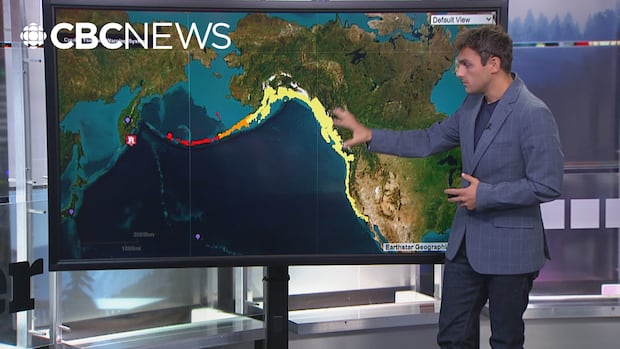Tsunami advisory cancelled for B.C. coast after massive Pacific earthquake
Residents of much of coastal B.C. were asked earlier to avoid beaches, shorelines late Tuesday
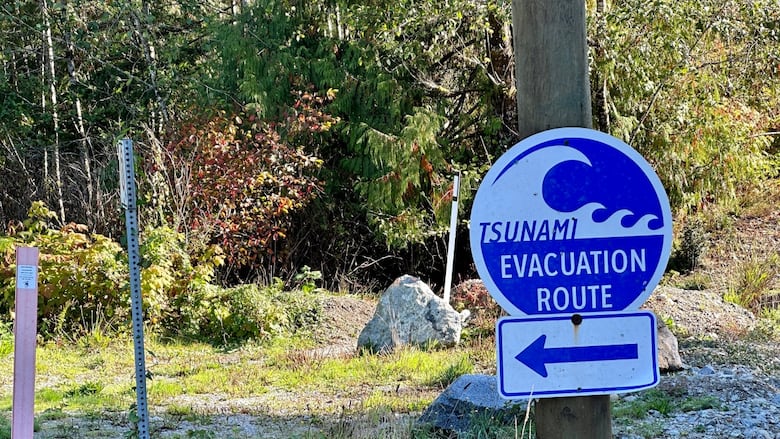
UPDATE — July 30, 2025: B.C. lifts tsunami advisory after major earthquake off Russian coast.
A tsunami advisory for multiple parts of the B.C. coast was cancelled early Wednesday following a large earthquake in the Pacific basin near Kamchatka, Russia, on Tuesday afternoon.
The U.S.-based National Tsunami Warning Centre says there was a magnitude 8.8 earthquake, with B.C. officials saying it occurred around 135 kilometres southeast of the Russian city of Petropavlovsk around 4:25 p.m. PT.
A tsunami advisory, cautioning about the potential for coastal impacts, was issued for B.C.'s north and central coasts, including Kitimat and Bella Coola, Haida Gwaii and the west and northeast coasts of Vancouver Island. It replaced a tsunami watch that had initially been in place while potential impacts were being assessed.
The advisory also spanned the Juan de Fuca Strait from Jordan River to Greater Victoria, including the Saanich Peninsula.
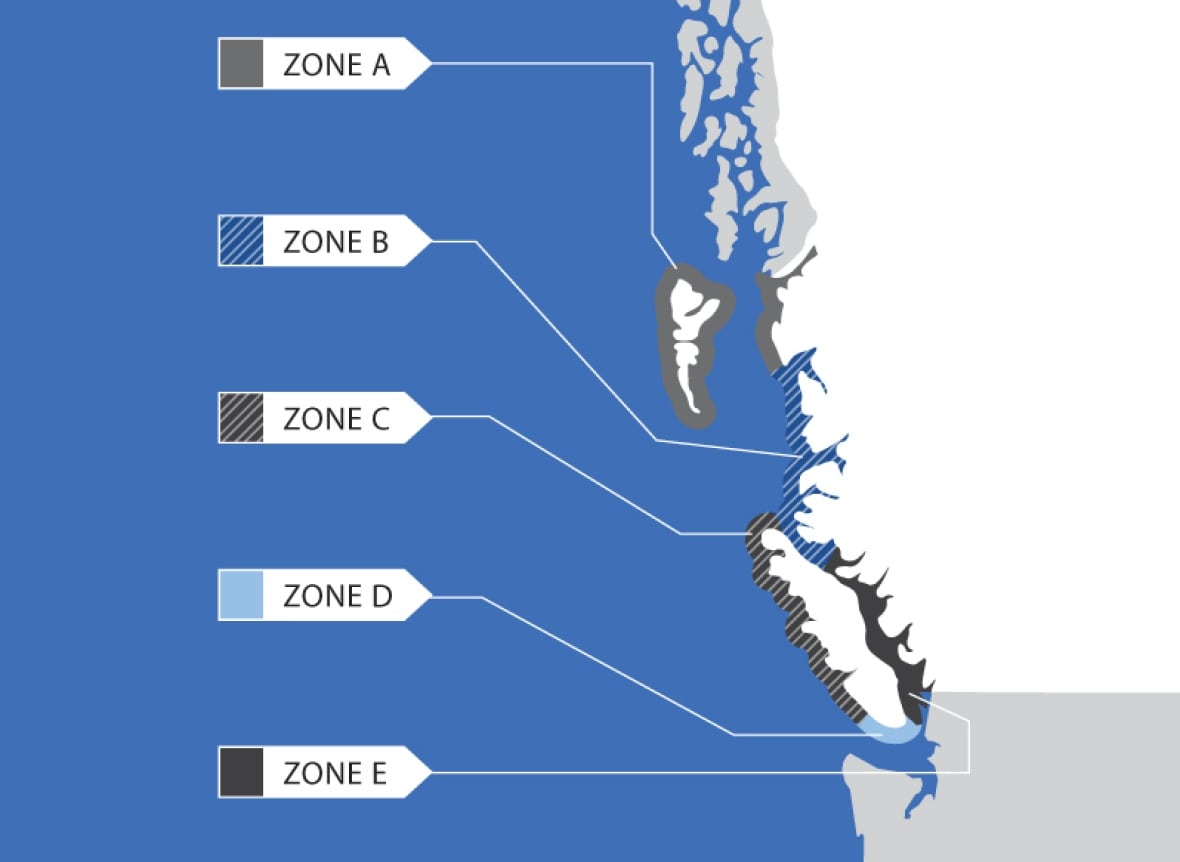
A tsunami advisory means residents should move away from the ocean and stay alert for more instructions from officials.
"Significant inundation is not expected for areas under an advisory, but coastal zones may be at risk due to strong currents," reads an Emergency Info B.C. advisory.
For Tsunami Notification Zones A, B, C, & D currently under Tsunami Advisory: <br>• Stay out of the water. DO NOT go to the shore to observe currents or waves<br>• Avoid low-lying coastal areas, harbors, marinas & beaches until emergency officials say it is safe<br>• Monitor for… <a href="https://t.co/rMo16swgLj">https://t.co/rMo16swgLj</a> <a href="https://t.co/9siotR5snt">pic.twitter.com/9siotR5snt</a>
—@EmergencyInfoBCThe advisory adds strong waves and currents could drown or injure people who are in the water, and currents at beaches, harbours, marinas or bays could be especially dangerous.
It had earlier advised boat operators in areas under a tsunami watch to move their boats out to sea to a depth of at least 55 metres if time and conditions permit, and avoid shallow water and inlets if they are already at sea.
A tsunami warning, which is the highest level, means that residents should move away from the water immediately.
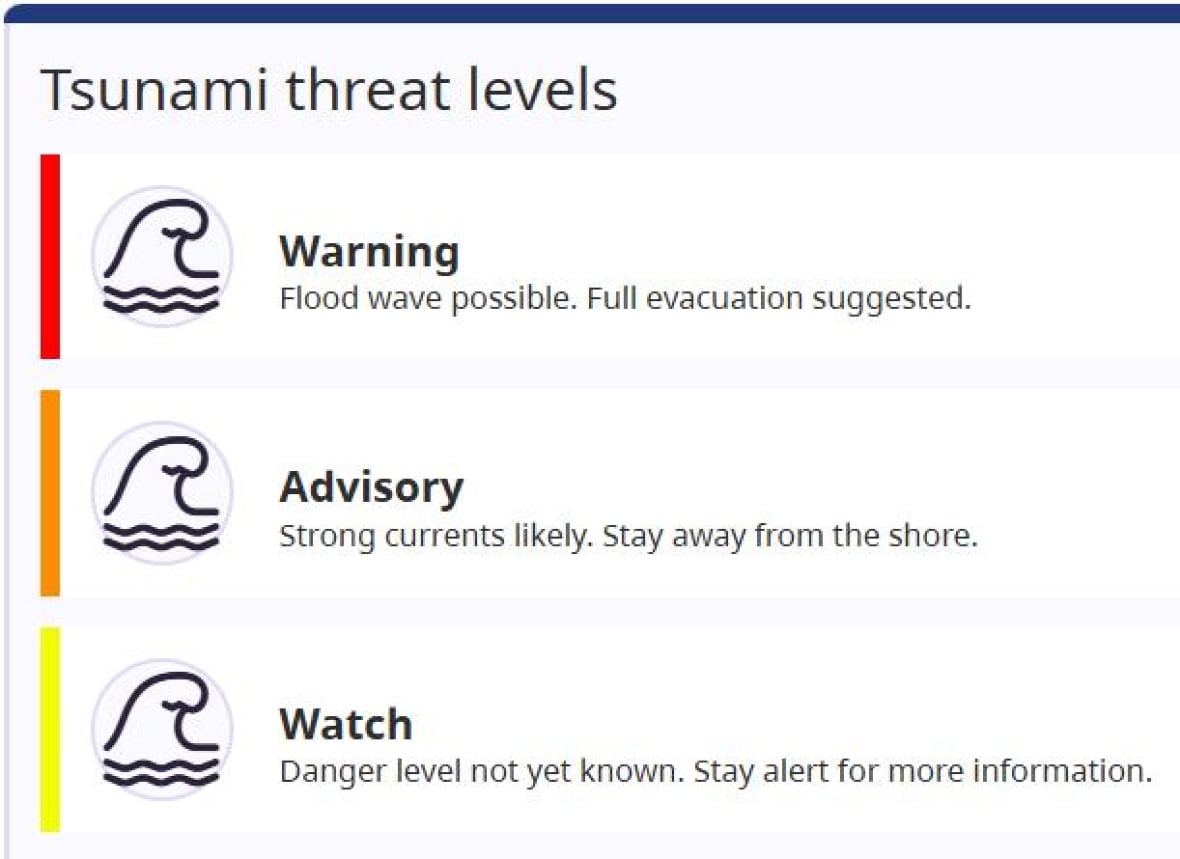
Taimi Mulder, an earthquake seismologist with Natural Resources Canada, said that even if forecasted tsunami wave heights were small, people should heed the warnings to stay away from the water.
"One still wants to be away from the water, and the water's edge, at that time," she told CBC News late Tuesday night.
"Because unpredictable things could happen, and the currents will be much stronger than normal, and the water will be more confused-looking than normal."
Tofino beaches closed overnight
The District of Tofino on the west coast of Vancouver Island said in an emergency notification around 7 p.m. PT Tuesday that people shouldn't go to the shore to observe the waves, and later told CBC News in an email that it had closed all beaches.
In a social media post early Wednesday, the district said it was safe for people to return to shorelines, and that the area had "experienced minimal wave activity overnight," with a maximum height of about 15 centimetres.
Emergency Info B.C. says Langara Island, off the coast of Haida Gwaii, saw tsunami waves around 10:05 p.m. PT Tuesday, but the wave height was forecast to be less than 30 centimetres.

John Cassidy, another seismologist with Natural Resources Canada, said Tuesday's earthquake was the type of seismic movement that was most likely to generate a tsunami.
"Those waves can travel across the Pacific.... They can travel a long way when they're out in the open ocean," he told Jason D'Souza, host of CBC's All Points West, just before 6 p.m. PT on Tuesday.
"The tsunami waves travel at about the same speed as a jet," he added.
If the magnitude of 8.8 is confirmed, the earthquake would be among the top 10 strongest earthquakes recorded since 1900, according to the U.S. Geological Survey.
It would be the strongest earthquake since the devastating 2011 earthquake that struck near the Tōhoku region of Japan, which had a magnitude of 9.0 and triggered a tsunami wave more than 40 metres high.
"It's a larger earthquake than we've seen,... in my lifetime anyway, that's that close [and] could potentially affect our B.C. coast," said Elmer Frank, chief councillor of the Tla-o-qui-aht First Nation, whose traditional territories encompass Tofino and Ucluelet on Vancouver Island.
Frank said Tuesday's earthquake and tsunami scare is a reminder for his community to keep up on emergency drills and preparedness.
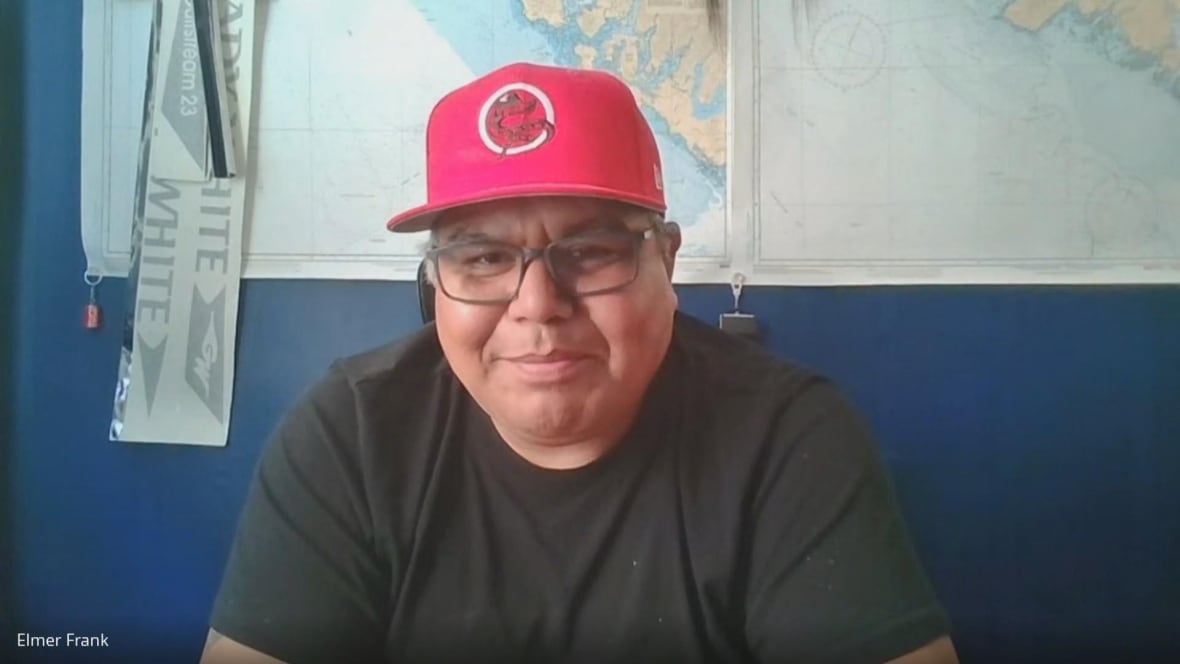
No major tsunami expected to hit Hawaii
The U.S. Geological Survey, in an updated measurement on Tuesday evening, said the quake hit at a depth of 20.7 kilometres.
In the U.S. state of Hawaii, waves of up to 1.7 metres impacted the islands before the Pacific Tsunami Warning Centre reduced its warning level for the state late Tuesday, saying no major tsunami was expected.
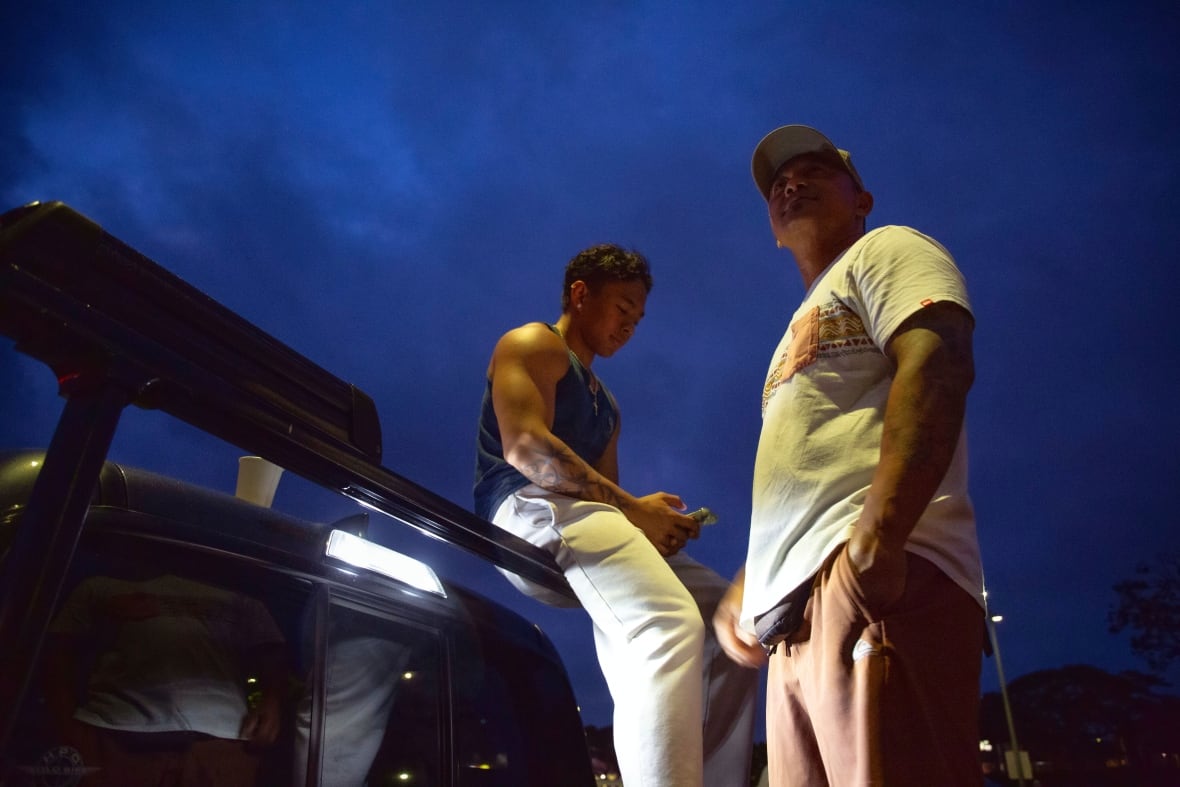
"Initial wave impacts from the leading edge of the tsunami measured several feet at some monitoring stations, but 'follow-up' waves over the next several hours are often larger," said Maui County in a recent update.
Cars jammed streets and highways in Hawaii's capital of Honolulu, with standstill traffic even in areas away from the shoreline.
Ports on the Kamchatka Peninsula in Russia near the 8.8 magnitude quake's epicentre flooded as residents fled inland, and frothy, white waves washed up to the shore in northern Japan.
People went to evacuation centres in affected areas of Japan, with memories fresh of the 2011 earthquake and tsunami that caused reactor meltdowns at a nuclear power plant. No abnormalities in operations at Japan's nuclear plants were reported Wednesday.
Russian authorities said several people were injured, without giving a figure. In Japan, at least one person was injured.

With files from All Points West, Rafferty Baker and The Associated Press


